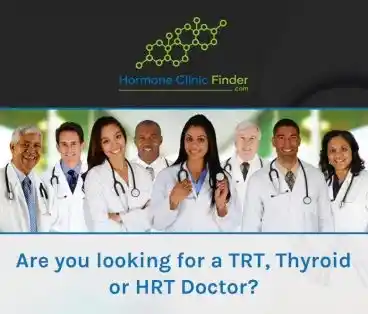madman
Super Moderator
* Our findings suggest that the presence of OSA risk factors may alter the effect of TRT on OSA incidence, where TRT is associated with lower incidence in people without risk factors and higher incidence in people with risk factors.
INCIDENCE OF OBSTRUCTIVE SLEEP APNEA IN PATIENTS TAKING TESTOSTERONE REPLACEMENT THERAPY STRATIFIED BY OSA RISK FACTORS
Kathleen Li*, Rochester, NY; Thomas Chen, New York, NY; Parth Joshi,David Peters, Mineola, NY
INTRODUCTION AND OBJECTIVE
The relationship between hypogonadism, testosterone replacement therapy (TRT), and obstructive sleep apnea (OSA) is well-documented but poorly understood. Low testosterone and OSA are believed to be connected because testosterone production is linked to sleep patterns, especially rapid eye movement (REM) sleep. Moreover, TRT is typically contraindicated in OSA patients. However, due to the lack of evidence for a causal relationship between TRT and OSA, this study aims to further investigate the role of TRT in OSA occurrence in people with established risk factors.
METHODS
Using EPIC System’s Slicer Dicer feature, we retrospectively collected single institution data of patients diagnosed with low testosterone or hypogonadism and subsequently started on TRT within 6 months from 7/1/2014 to 7/1/2024. Patients were stratified by OSA risk factors and assessed for OSA incidence within 2 years after starting TRT. Females were excluded. Data analyzed descriptively and with chi-square/z-test analyses via Microsoft Excel.
RESULTS
Of 6,405 hypogonadal patients on TRT, 14% (n=921) were diagnosed with OSA after starting TRT, compared to a 12% rate of OSA in all patients with hypogonadism. There was a significant association between OSA development after starting TRT and obesity (p<.00001), family history of sleep apnea (p<.00001), alcohol consumption (p<.00001), smoking status (p=.00004), age (p=0.00017), and race (p=.00259). Among patients taking TRT, lower incidences of OSA were associated with patients who are younger (<50 years old, p=.00570), non-obese (p<.00001), and have no smoking history (p=.00019), alcohol consumption (p<.00001), nor family history (p<.00001). TRT was also associated with increased incidence of OSA in patients with any of the OSA risk factors listed above.
CONCLUSIONS
Our findings suggest that the presence of OSA risk factors may alter the effect of TRT on OSA incidence, where TRT is associated with lower incidence in people without risk factors and higher incidence in people with risk factors. Using our results, clinicians may counsel prospective TRT patients about their risk of developing OSA based on the presence of OSA risk factors. Furthermore, our data supports the contraindication of TRT in people at risk of OSA.
INCIDENCE OF OBSTRUCTIVE SLEEP APNEA IN PATIENTS TAKING TESTOSTERONE REPLACEMENT THERAPY STRATIFIED BY OSA RISK FACTORS
Kathleen Li*, Rochester, NY; Thomas Chen, New York, NY; Parth Joshi,David Peters, Mineola, NY
INTRODUCTION AND OBJECTIVE
The relationship between hypogonadism, testosterone replacement therapy (TRT), and obstructive sleep apnea (OSA) is well-documented but poorly understood. Low testosterone and OSA are believed to be connected because testosterone production is linked to sleep patterns, especially rapid eye movement (REM) sleep. Moreover, TRT is typically contraindicated in OSA patients. However, due to the lack of evidence for a causal relationship between TRT and OSA, this study aims to further investigate the role of TRT in OSA occurrence in people with established risk factors.
METHODS
Using EPIC System’s Slicer Dicer feature, we retrospectively collected single institution data of patients diagnosed with low testosterone or hypogonadism and subsequently started on TRT within 6 months from 7/1/2014 to 7/1/2024. Patients were stratified by OSA risk factors and assessed for OSA incidence within 2 years after starting TRT. Females were excluded. Data analyzed descriptively and with chi-square/z-test analyses via Microsoft Excel.
RESULTS
Of 6,405 hypogonadal patients on TRT, 14% (n=921) were diagnosed with OSA after starting TRT, compared to a 12% rate of OSA in all patients with hypogonadism. There was a significant association between OSA development after starting TRT and obesity (p<.00001), family history of sleep apnea (p<.00001), alcohol consumption (p<.00001), smoking status (p=.00004), age (p=0.00017), and race (p=.00259). Among patients taking TRT, lower incidences of OSA were associated with patients who are younger (<50 years old, p=.00570), non-obese (p<.00001), and have no smoking history (p=.00019), alcohol consumption (p<.00001), nor family history (p<.00001). TRT was also associated with increased incidence of OSA in patients with any of the OSA risk factors listed above.
CONCLUSIONS
Our findings suggest that the presence of OSA risk factors may alter the effect of TRT on OSA incidence, where TRT is associated with lower incidence in people without risk factors and higher incidence in people with risk factors. Using our results, clinicians may counsel prospective TRT patients about their risk of developing OSA based on the presence of OSA risk factors. Furthermore, our data supports the contraindication of TRT in people at risk of OSA.














